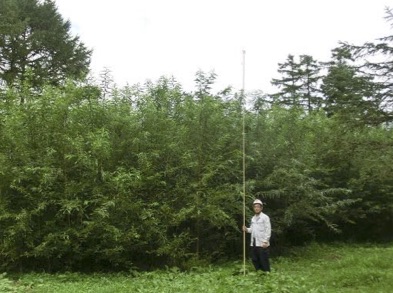Home > Willow for biomass production
Update:April 9, 2019
Main content starts here.
Selection of the high-yield willow clones
Decreasing the dependence on fossil fuel is an important issue in the world to reduce the effect of climate change. Renewable energy is the alternative energy source to fossil fuel, and the supply has been increasing in recent decades. Biomass is an important renewable energy source, and that can be used for transportation fuel, and manufactured bioproducts including plastics and cellulose nano fiber.
Woody biomass productions, called short rotation coppice (SRC), in agricultural land are carrying in Sweden, UK, and other European countries. Fast-growing tree species, willow and poplar, are chosen for SRC and the maximum biomass production can be more than 10 dry-ton year-1 ha-1. In Hokkaido, SRC in unused farmland is focused for the biomass production. This will help the climate change mitigation and will be a positive effect for the local economy.
The practices in some European countries showed the selection of the high yield clones are important for the efficient biomass production in willow tree. Hokkaido Regional Breeding Office is working for the selection of superior clones of Salix sachalinensis and Salix pet-susu. Our research has also indicated the variation in the yield was large between clones. Superior clones grew more than 5m in 2 years (Fig. 1). We will select the high-yield clones of the two willow species and this work will contribute the increase of biomass production.

Superior willow clones grew more than 5m in 2 years
Copyright © Forest Research and Management Organization. All rights reserved.
